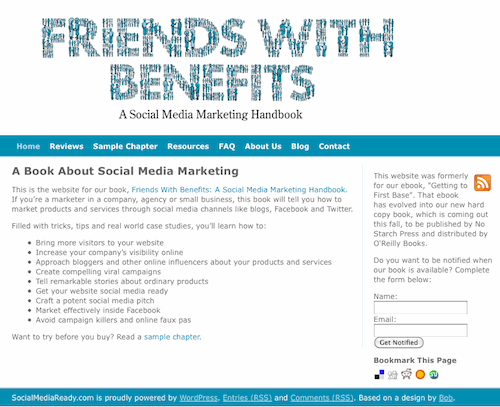In November 2012, Tim Ash of Sitetuners and Dan Siroker of Optimizely ran a webinar that I really enjoyed that looked at insights from neuroscience that can be applied to A/B Testing for web design. I've used the Express Review from Sitetuners for a number of client website re-designs and have always found the process helpful. And one of my personal fascinations is what I call “recreational neuroscience,” a combo of user behaviour, neuroscience and pop psychology. If you're working on website design, then I highly recommend watching the above webinar. The guts of the presentation are in the first 30 minutes and the remaining time is audience questions.
Highlights & Takeaways
- We have 3 brains. The neo-cortex is our newest (newly developed) brain and is responsible for things like planning ahead and delaying gratification. These processes account for the smallest amount of activity, despite our belief that we are rational, thinking beings. The limbic system is the mammalian brain that is responsible for emotion-based decisions and rationalizing with the neo-cortext. The brain stem or reptilian brain is the oldest part of our brain and is responsible for fight or flight signals, automated processes like breathing and general survival.
- The reptilian brain is like the bar bouncer. It decides what the other brains see or need to pay attention to. It's basic process involves “is it dangerous?” if yes flight or fight, if not then “is it novel or interesting?” If yes then feed it to me or fornicate with it. If it's not dangerous or novel, then ignore it. (You can see we aren't as highly sophisticated as we think we are.)
- Our eyes dominate our experience of the world. Half of our brain is devoted to visual processing, which means in online marketing and web design, the visual attention we are asking visitors to pay to a page is important to understand. Bigger pictures are better for engagement but visual embellishments can just be a distraction. Text links or calls to action can sometimes outperform images or videos because of the lower cognitive load.
- We have two types of vision: rods and cones. Cones are for fine detail (picking the berries that won't kill you) and rods are for big-picture detail, in particular movement (as in please note the prowling tiger approaching from the left). When designing web pages this means that moving images grab our attention. Automated sliders for example might be more distracting than a static image and should be A/B tested. Videos or ads that automatically play or move should be tested as well because they put the reptilian brain on alert.
- Verbs in call to actions are helpful in stimulating the brain to take action: Try It Free, Learn More.
- Humans, like apes, like socializing, family units and are influenced by family and friends. Web pages that use personalization or social proof perform better. Google search results, for example, show +1s from Friends. Button text based on audience segments convert better. For example, on the 2008 Obama campaign website, the button text that appeared for visitors who had never signed up to receive alerts said “Donate and Get a Gift” whereas the button text for those who had signed up but never donated said “Please Donate”.
- If you're doing A/B Testing, go big or go home. Don't test small things like punctuation or button colour. Start with dramatic layout changes and big, easy to see changes.
- Resources:100 Things Every Designer Needs to Know About People by Susan Weinschenk and Brainfluence: 100 Ways to Persuade and Convince Consumers with Neuromarketing by Roger Dooley


